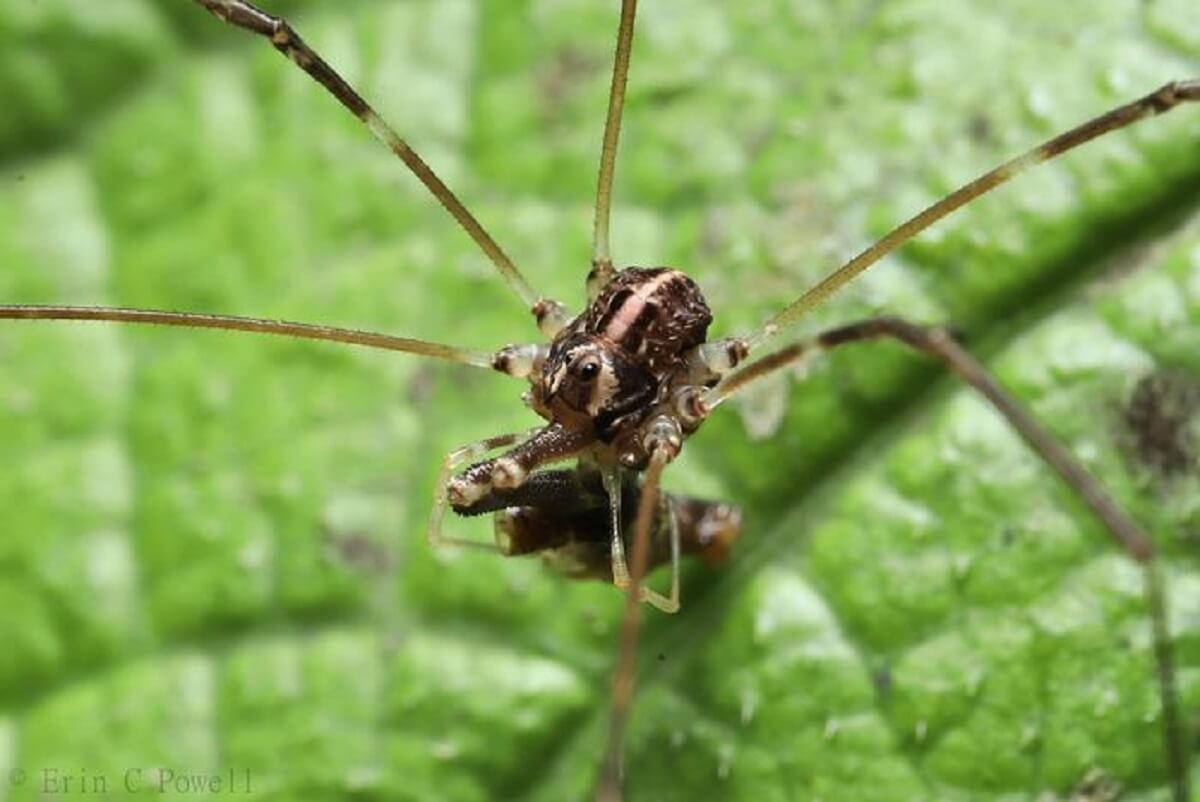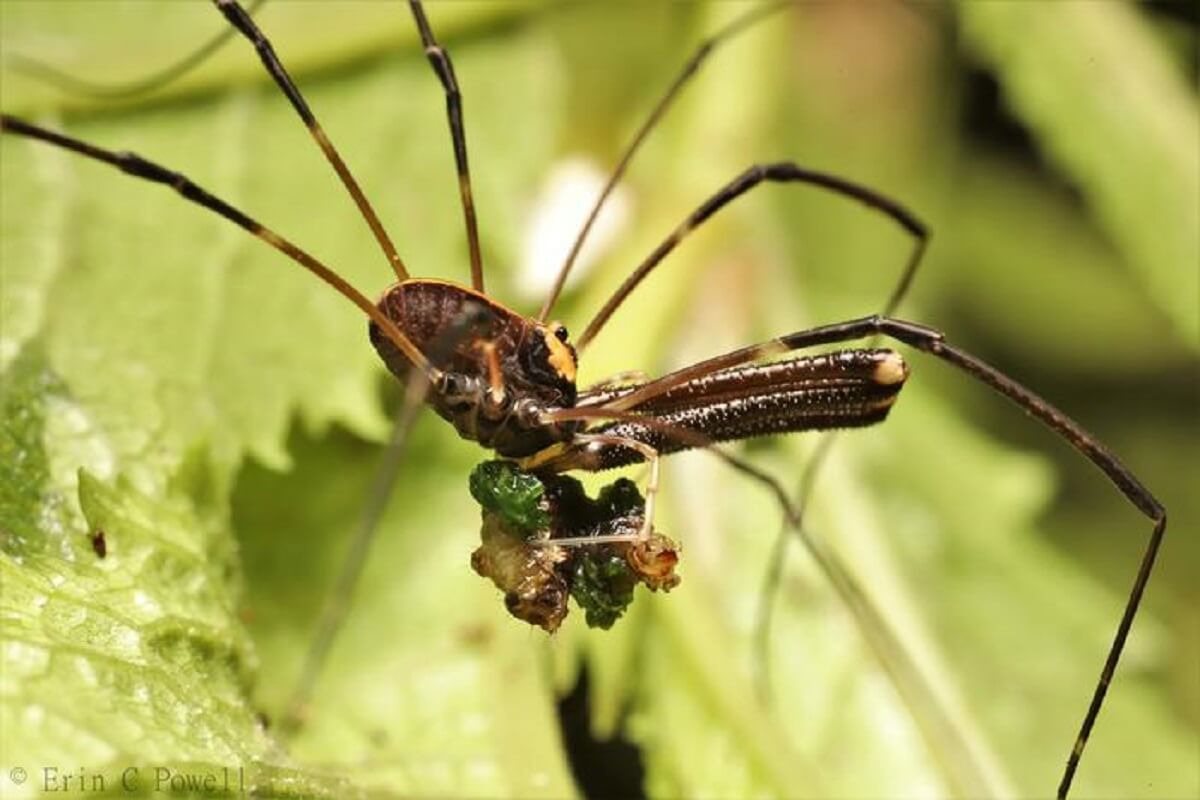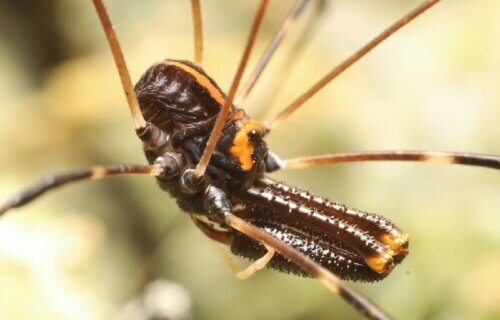AUCKLAND, New Zealand — The fascinating world of the arachnid kingdom is introducing us to a species that boasts three distinct types of males. These intriguing creatures, native to New Zealand, are thought to evolve into their disparate forms because of changing environmental factors.
A recent study has illuminated the “trimorphic” nature of these arachnids, revealing that they could develop into powerful alpha or beta males, possessing large jaws that account for up to half of their total body weight. Conversely, they may evolve into comparatively small gamma males who allocate their resources towards reproduction, capitalizing on limited mating opportunities.
The decision of which form the male harvestman assumes could hinge on their experiences with predators. Certain harvestmen have been observed to sacrifice their own legs to evade larger creatures, never regenerating the lost limbs.
Arachnids, a class that encompasses mites, scorpions, and spiders, are distinct from insects due to their four pairs of legs and the absence of antennae. Researchers from the University of Auckland embarked on a study of these cave-dwelling creatures to understand why males evolve to have such drastically different bodies and weaponry.

Whereas female huntsmen conform to a single type, males exhibit three — each boasting a unique body size, shape, and armaments. Alpha and beta males utilize their massive, protruding jaws to vie over females. Gamma males, growing up to seven times smaller, prefer to locate unguarded females to mate with stealthily rather than engage in combat.
The study has offered insight into why certain males land at the bottom of the hierarchy. Just as lizards can shed their tails to escape predators, huntsmen can discard their legs. However, unlike lizards, they are incapable of regenerating the lost limbs.
Scarring on these creatures can reveal whether the loss of legs occurred during their juvenile or adult stage. The research suggests that males who lose at least one leg during their development are 45 times more likely to mature into smaller, weaker gamma males.
The research team discovered that gamma males choose to redirect their development elsewhere after abandoning the prospect of becoming an alpha or beta.
“Perhaps this is because they can’t get enough food for their development because their hunting is impeded. Or maybe there’s no point in investing in big fighting weapons when they’re already disadvantaged when it comes to fighting,” says Dr. Erin Powell, who now serves as a research scientist for the Florida Department of Agriculture and Consumer Services, in a university release. “So, the arachnids’ resources may be invested in other things, such as testes size, sperm count, or aerobic poise, to ensure they make the most of the mating opportunities they get.”

The scientists reason that adopting this survival strategy might be more beneficial than attempting and failing to compete with larger, more formidable alpha and beta males in hazardous male confrontations.
Trimorphism is remarkably rare in the animal kingdom. Initially, researchers theorized that genetics and nutrition may drive such variation within a single species. However, the study suggests that environmental factors, such as predator encounters, might be more significant than previously believed in determining the ultimate adult form of males.
The mystery still endures regarding why alpha and beta huntsmen evolve with large bodies and different weapon shapes. The research team hypothesizes that each form may have unique advantages in battles with other males, with one conferring more power and the other offering a longer reach in skirmishes.
“With their ridiculous towering weaponry and extreme male size variation, New Zealand harvestmen are both charming and puzzling. We still have much to learn about their fascinating biology and they have much to teach us about the evolution of mating systems across animal taxa,” says Dr. Powell.
The study is published in the journal Behavioral Ecology.
South West News Service writer James Gamble contributed to this report.


Not only are harvestmen not spiders as the headline indicates, but the later mistake of mentioning female ‘huntsmen’ is also incorrect. Huntsmen are actual spiders and significantly different from their arachnid cousins. Please correct the article.
Looks like a DaddyLongLegs closeup and personal.🤷🏻♂️😂🤣